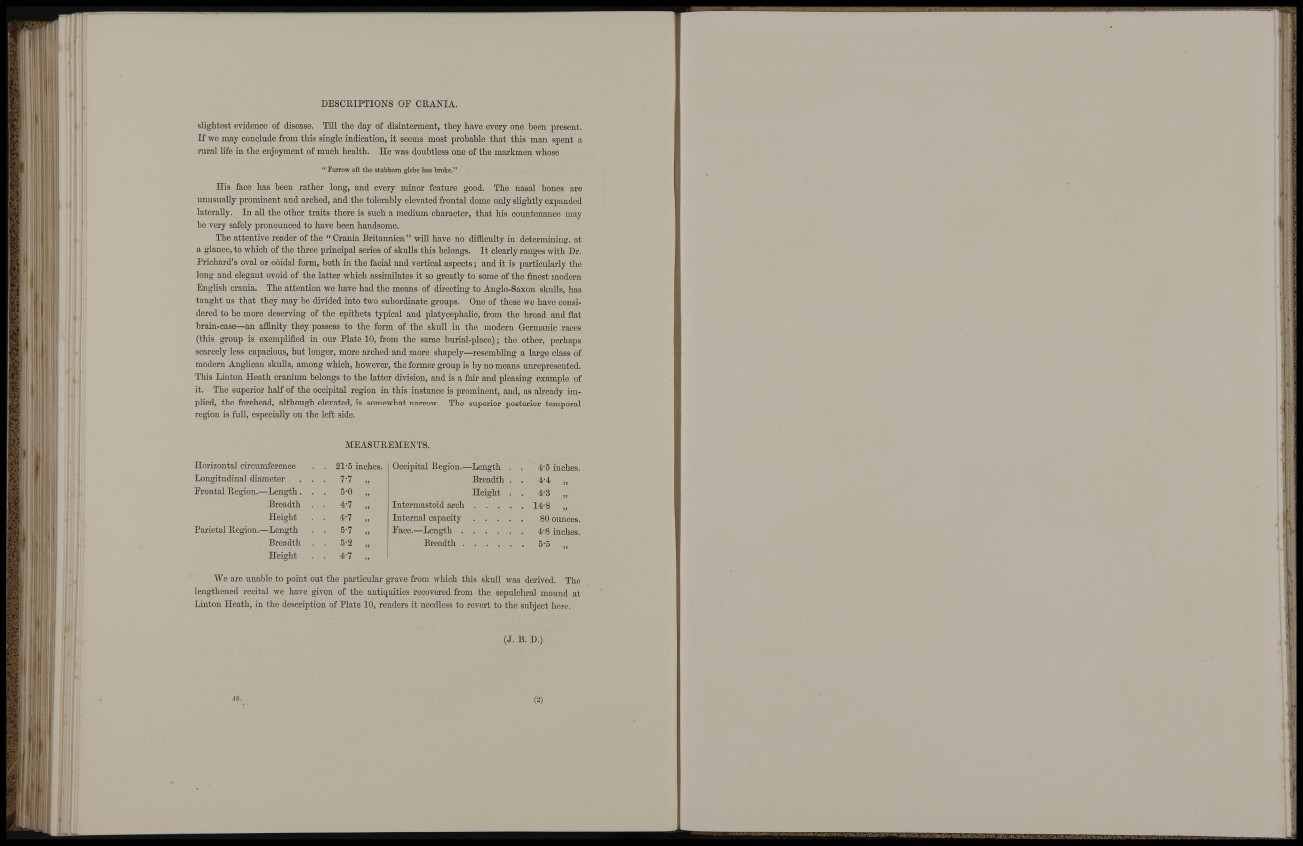
iL¡;
'íiií
:! iljf
::
. . . ;
i i i'
i:,,; „
DESCRIPTIONS OF CRANIA.
slightest evidence of disease. Till the day of disinterment, they have every one been present.
If we may conclude from this single indication, it seems most probable that this man spent a
rural life in the enjoyment of much health. He was doubtless one of the markmen whose
" Furrow oft the stubborn glebe has broke."
His face has been rather long, and every minor feature good. The nasal bones are
unusually prominent and arched, and the tolerably elevated frontal dome only slightly expanded
laterally. In aU the other traits there is such a medium character, that his countenance may
be very safely pronounced to have been handsome.
The attentive reader of the " Crania Britannica" will have no difficulty in determining, at
a glance, to which of the three principal series of skulls this belongs. It clearly ranges with Dr.
Prichard's oval or ooidal form, both in the facial and vertical aspects; and it is particularly the
long and elegant ovoid of the latter which assimilates it so greatly to some of the finest modern
English crania. The attention we have had the means of dii-ecting to Anglo-Saxon skulls, has
taught us that they may be divided into two subordinate groups. One of these we have considered
to be more deserving of the epithets typical and platycephalic, from the broad and flat
brain-case—an affinity they possess to the form of the skull in the modern Germanic races
(this group is exemplified in our Plate 10, from the same burial-place); the other, perhaps
scarcely less capacious, but longer, more arched and more shapely—resembling a large class of
modern Anglican skulls, among which, however, the former group is by no means unrepresented.
This Linton Heath cranium belongs to the latter division, and is a fair and pleasing example of
it. The superior half of the occipital region in this instance is prominent, and, as already implied,
the forehead, although elevated, is somewhat narrow. The superior posterior temporal
region is full, especially on the left side.
MEASUREMENTS.
Horizontal circimiference
Longitudinal diameter
Prontal Region.—Length .
Breadth
Height
-Length
Breadth
Height
Parietal Region.-
21-5 inches.
7-7 „
5-0 „
4-7 „
4-7 „
5-7 „
5-2 „
4-7 „
Occipital Region-—Length . . 4-5 inches.
Breadth . . 4-4 „
Height . . 4-3 „
Intermastoid arch 14-8 „
Internal capacity 80 ounces.
Eace.—Length 4-8 inches.
Breadth 5'5 „
We are unable to point out the particular grave from which this skull was derived. The
lengthened recital we have given of the antiquities recovered fi'om the sepulchral mound at
Linton Heath, in the description of Plate 10, renders it needless to revert to the subject here.
(J. B. D.)
46. (2)
ii^iiii
• ï : i;
i
i